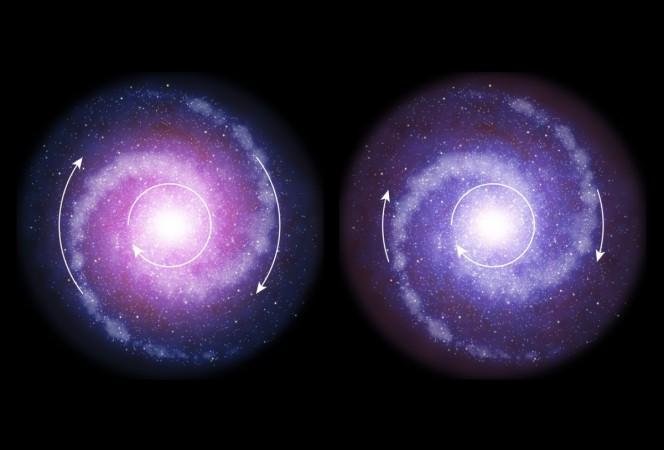
A recent study reveals that, unlike now, dark matter was present in lower concentrations in the early universe.
Also Read: Guess which beer will make history by being the first to be brewed on Mars!
The research was carried out by an international cohort of researchers, with Reinhard Genzel at the Max Planck Institute for Extraterrestrial Physics in Garching, Germany, as lead researcher.
The team of researchers made the discovery with the help of KMOS (K-band Multi Object Spectrograph) and SINFONI (Spectrograph for Integral Field Observations in the Near Infrared) instruments at ESO's Very Large Telescope in Chile, an ESO statement revealed.
Out of a very large sample of a hundred distant star-forming galaxies, the researchers mapped six with the help of these instruments.
"In addition to the individual galaxy measurements described above, an average rotation curve was created by combining the weaker signals from the other galaxies. This composite curve also showed the same decreasing velocity trend away from the centres of the galaxies. In addition, two further studies of 240 star forming discs also support these findings," the ESO statement said.
Around 10 billion years ago, when the giant star-forming galaxies were at their peak epoch of formation, they largely comprised baryonic matter and far lower amounts of dark matter, in comparison with present-day galaxies.
Researchers have found that the outer regions of far-off spiral galaxies, created in the early universe, appeared to be revolving at a slower speed than galaxies in regions closer to the galactic core.
"Surprisingly, the rotation velocities are not constant, but decrease further out in the galaxies," said Reinhard Genzel, lead author of the Nature paper, as quoted by an ESO statement.
"There are probably two causes for this. Firstly, most of these early massive galaxies are strongly dominated by normal matter, with dark matter playing a much smaller role than in the Local Universe. Secondly, these early discs were much more turbulent than the spiral galaxies we see in our cosmic neighbourhood," Genzel added.
The verdict is that the impact of dark matter on the early universe is much lower than in the present.
Dark matter is known for not reflecting, absorbing or emitting light. The only way to detect dark matter is via its gravitational impact on the galaxy.
Dark matter triggers the speed of the spiral galaxy's rotation; the pace of rotation slows with a reduction in Dark matter.
The researchers analysed the early Universe and found that the two effects were more defined. This led to the speculation that 3 to 4 billion years after the Big Bang, the gas present in galaxies had condensed into rotating flat discs, and the dark matter surrounding them was more stretched.
The dark matter condensed after a span of billions of years and its dominating impact can now be witnessed only on the rotational velocities of galaxy discs, the ESO statement stated.














